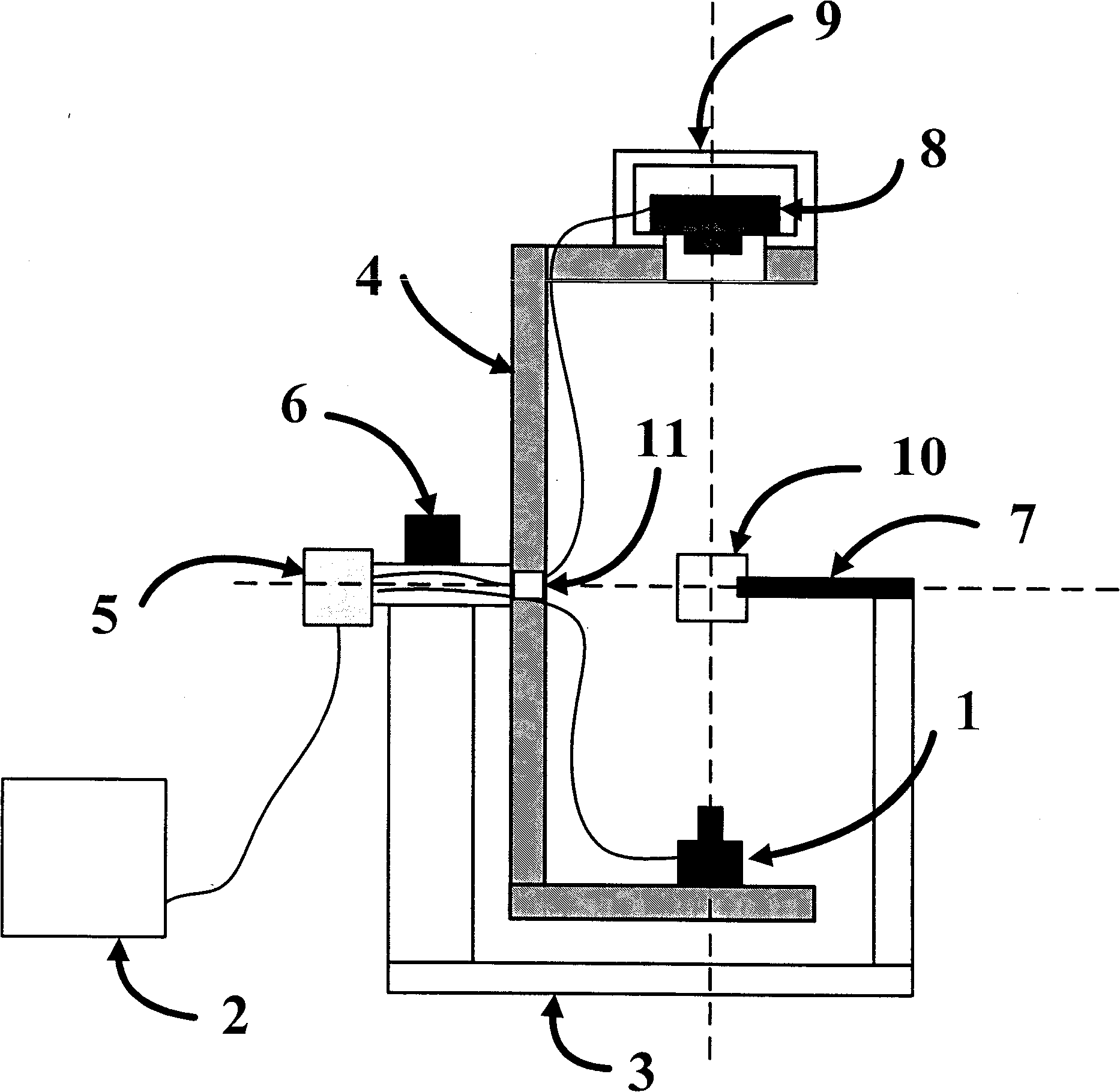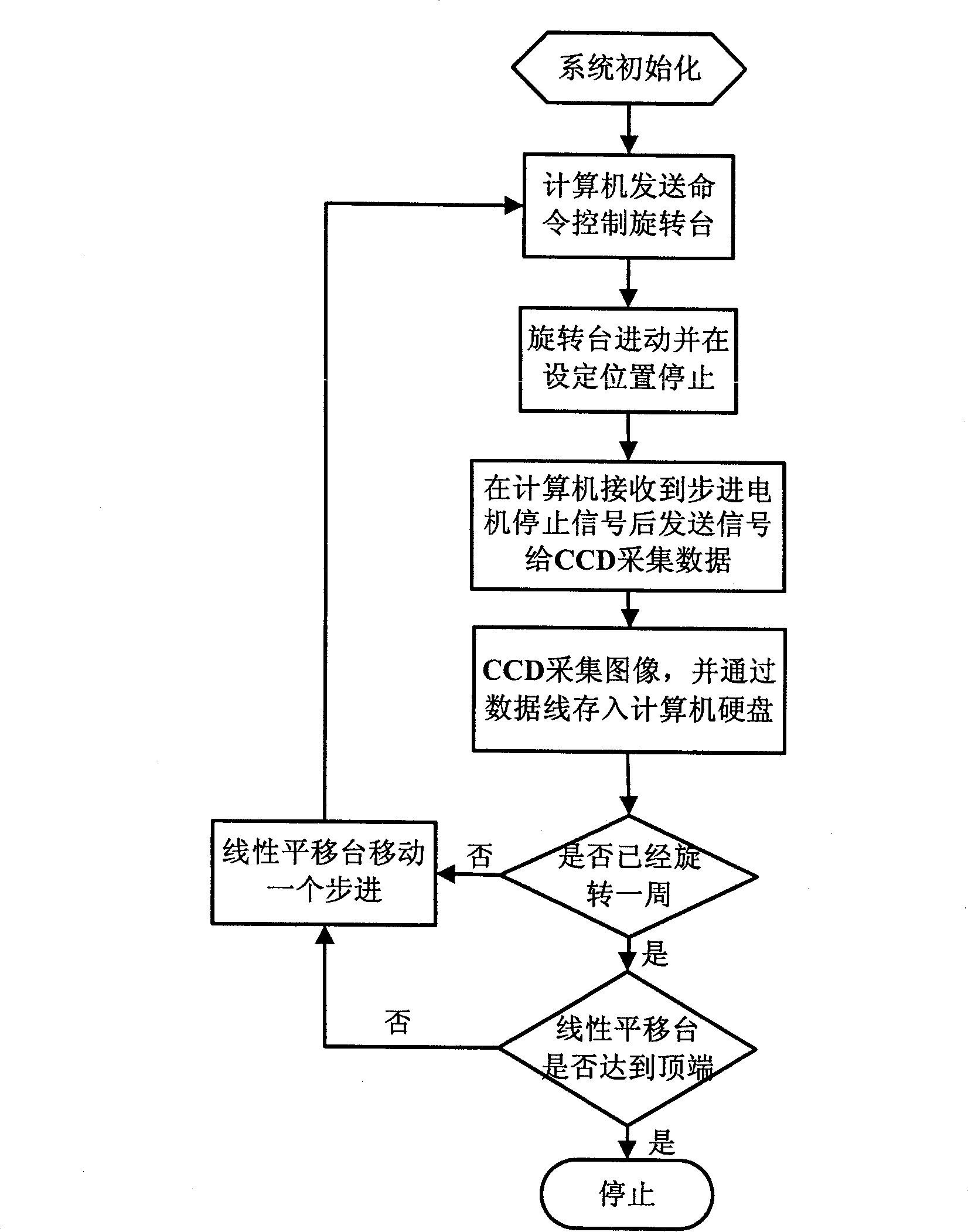Rotating type diffused fluorescent chromatographic imaging system
A fluorescence tomography and imaging system technology, applied in the field of biofluorescence tomography, can solve the problems of limited imaging quality and limited data volume, and achieve the effect of stable and effective data collection
- Summary
- Abstract
- Description
- Claims
- Application Information
AI Technical Summary
Problems solved by technology
Method used
Image
Examples
example 1
[0039] The parameters of semiconductor laser 1 are: 652nm / 50mW, spot diameter 0.38mm, 180° up and down offset 0.355mm. The imaging sample 10 is a cylindrical glass tube with an outer diameter of 25.4 mm and a wall thickness of 1 mm. The glass tube is filled with 1% Intrilipid aqueous solution and two small transparent plastic tubes. Both plastic tubes were filled with 2.0% Intrilipid aqueous solution, and two drops of ink were added in one plastic tube 17 (diameter 4 mm), and one drop of ink was added in the other plastic tube 18 (diameter 3.6 mm). Two plastic pipes 17, 18 are parallel, and the central axes of the two pipes are 8.6mm apart. The structural schematic diagram of this imaging sample 10 is shown in Figure 5a Three-dimensional schematic diagram of glass tube imaging sample, Figure 5b Schematic diagram of the cross-section of the imaging sample in the glass tube. Utilize the system of the present invention to collect data, calculate and obtain the absorption coe...
PUM
 Login to View More
Login to View More Abstract
Description
Claims
Application Information
 Login to View More
Login to View More - R&D
- Intellectual Property
- Life Sciences
- Materials
- Tech Scout
- Unparalleled Data Quality
- Higher Quality Content
- 60% Fewer Hallucinations
Browse by: Latest US Patents, China's latest patents, Technical Efficacy Thesaurus, Application Domain, Technology Topic, Popular Technical Reports.
© 2025 PatSnap. All rights reserved.Legal|Privacy policy|Modern Slavery Act Transparency Statement|Sitemap|About US| Contact US: help@patsnap.com



